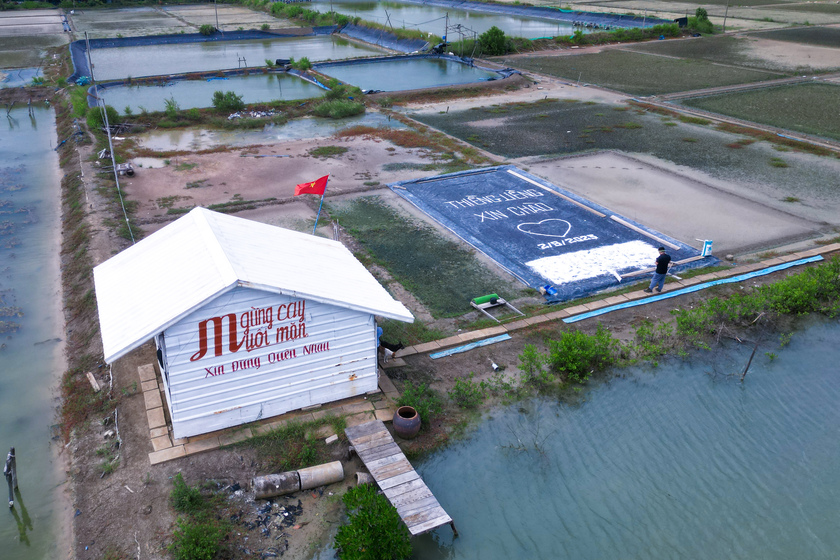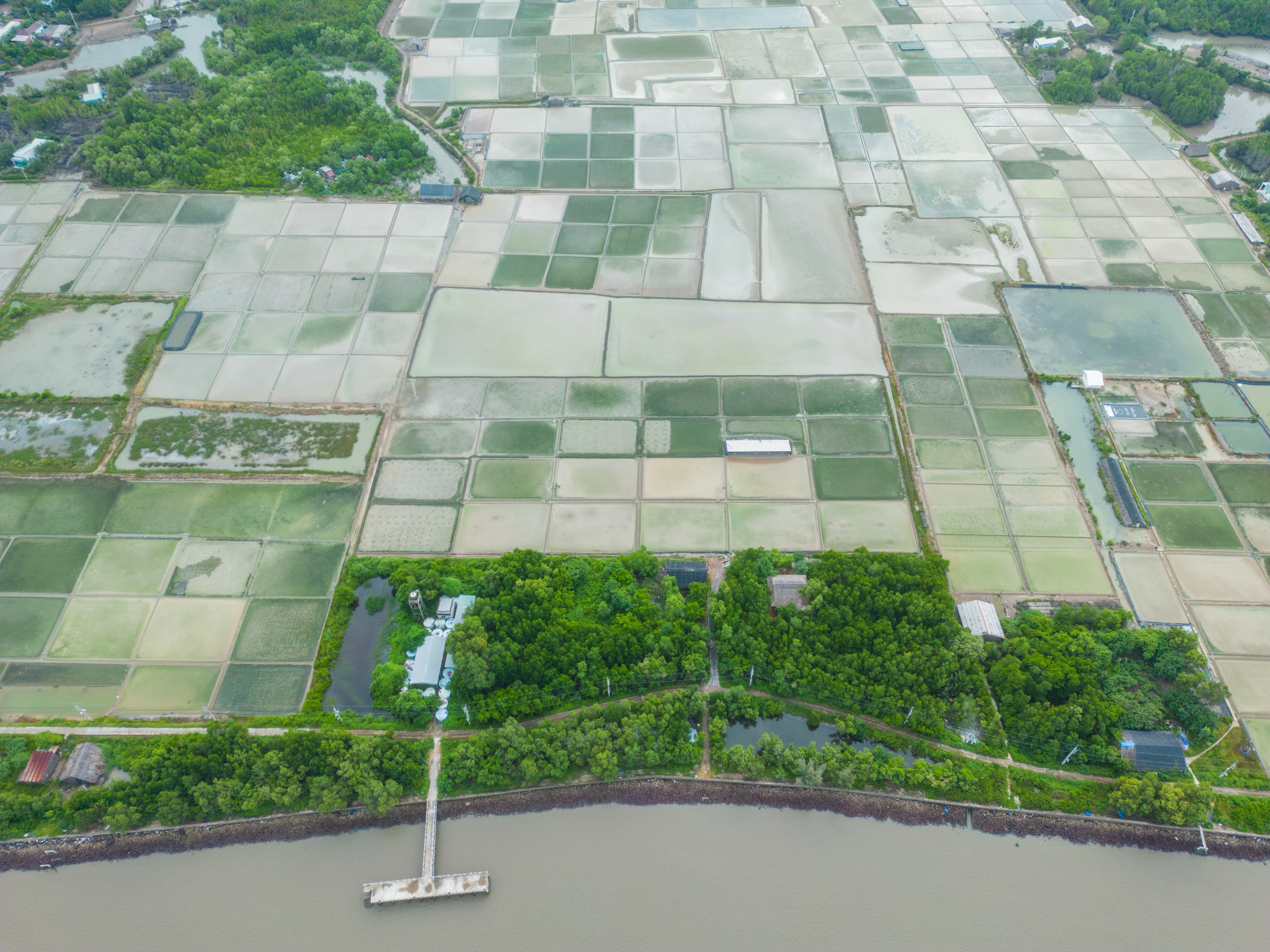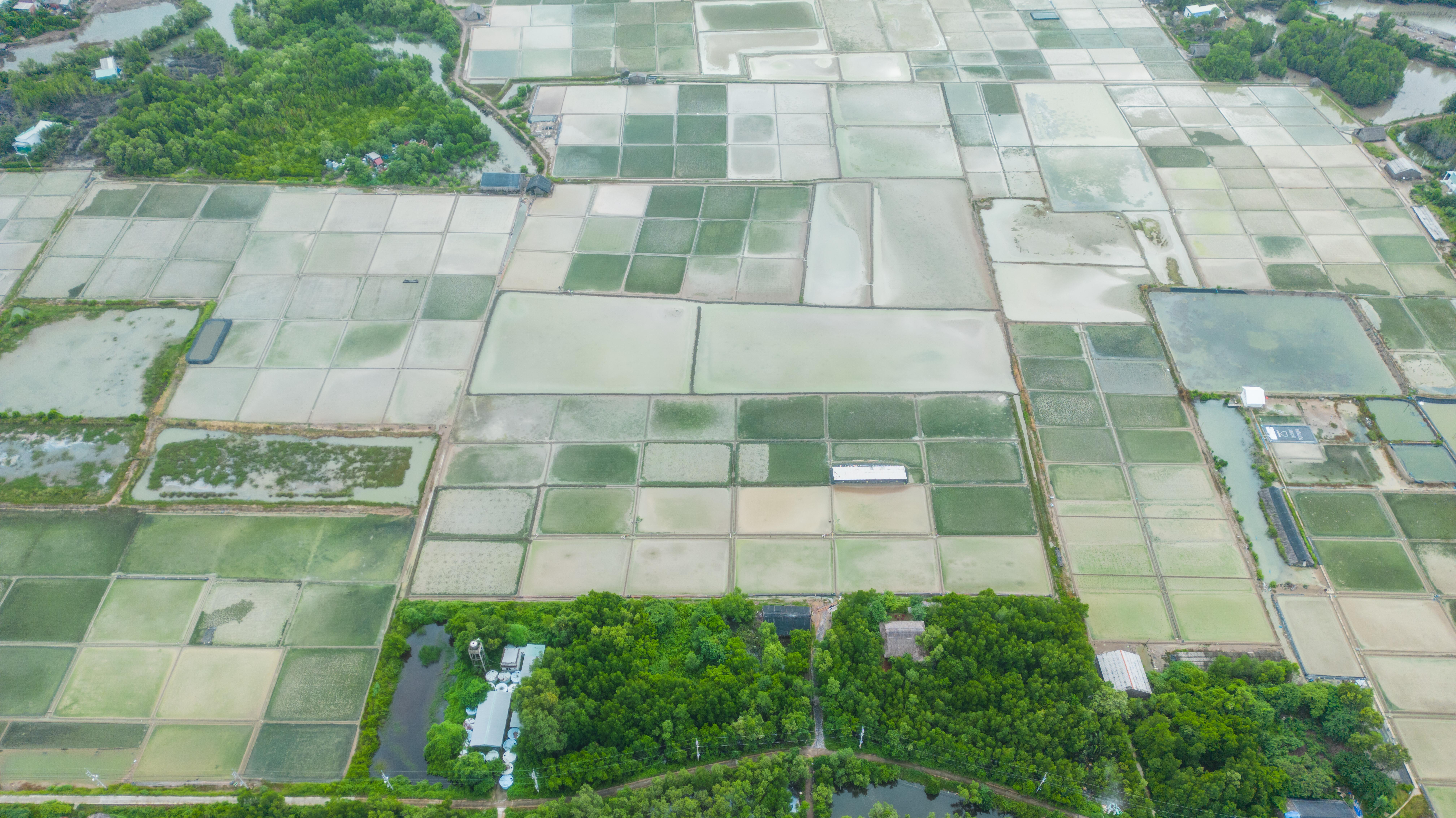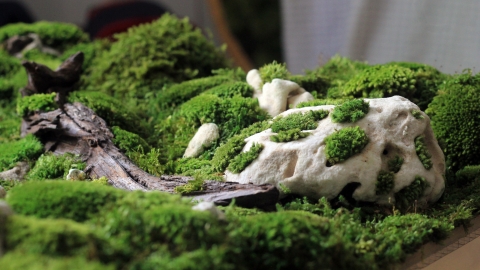During holidays or weekends, tourist destinations often become crowded and expensive. With the desire to find a place to enjoy fresh air during the holidays, Mr. Nguyen Thanh Tuan (37 years old, living in Ho Chi Minh City) chose Thieng Lieng Island - a peaceful, rustic land that still retains its wild beauty.
Thieng Lieng Island is located in Thanh An island commune, Can Gio district and is about 70 km from the center of Ho Chi Minh City. The small island is surrounded by rivers and canals on all sides, and is covered by cool green forests. With the advantage of "Can Gio mangrove biosphere reserve", 70% of the people live by making salt, the rest by fishing. Here, visitors can not only enjoy the hidden beauty of the natural island but also learn more about the salt making profession in this area.
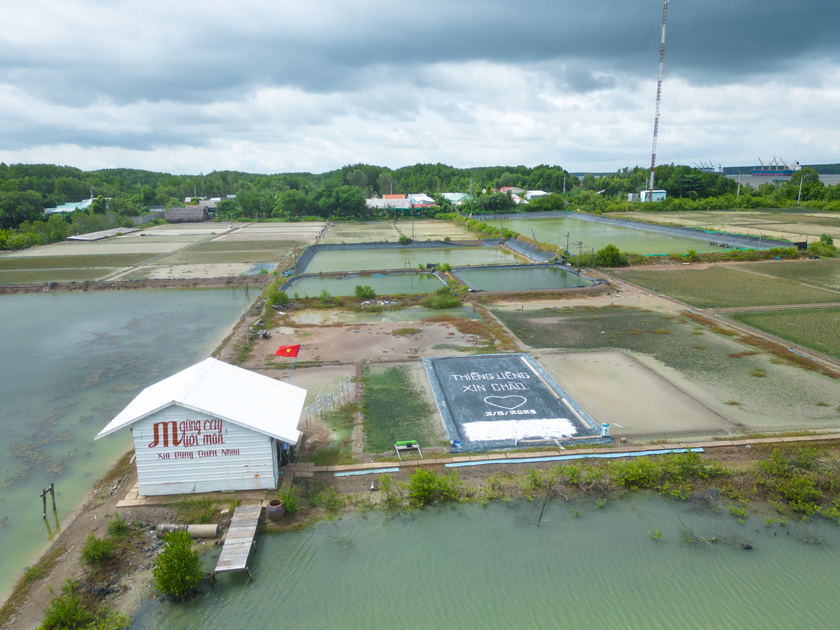
Thieng Lieng Island Hamlet is located in Thanh An Island Commune, Can Gio District and is about 70 km from the center of Ho Chi Minh City.
The land retains its wild beauty
When arriving at Thieng Lieng Island, Mr. Thanh Tuan was particularly impressed with the landscape here: “Thieng Lieng is like a world completely separate from the development of the city. I was very surprised by a place in Ho Chi Minh City that still retains its wildness, sparse population, preserved mangrove forests, quiet and fresh space”.
Because it has just been put into tourism exploitation, the infrastructure and roads on the island are still simple and rustic. For many people, they come to Thieng Lieng island simply to relax, enjoy the pristine beauty and explore the activities close to nature here. The peaceful moments of experiencing a new life in a countryside right in Saigon will help visitors forget the fatigue and chaos of daily life.
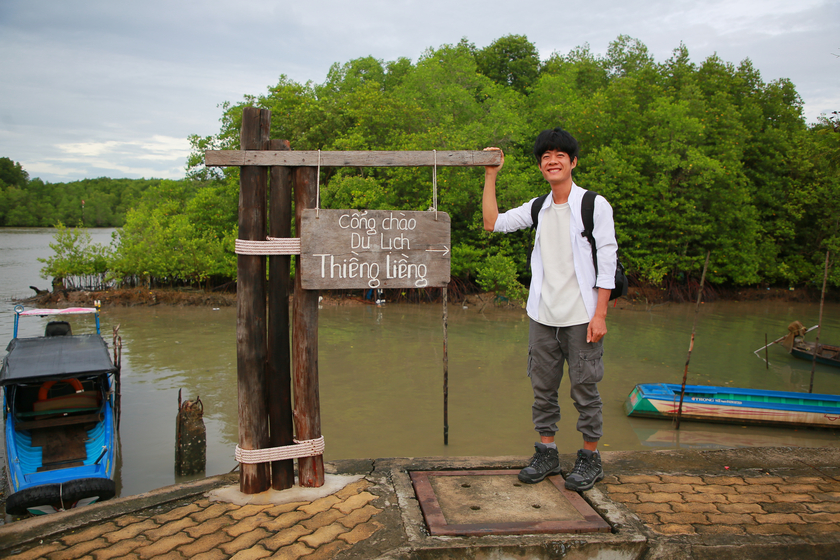
Because it has just been put into tourism exploitation, the facilities and roads on the island are still simple and rustic.
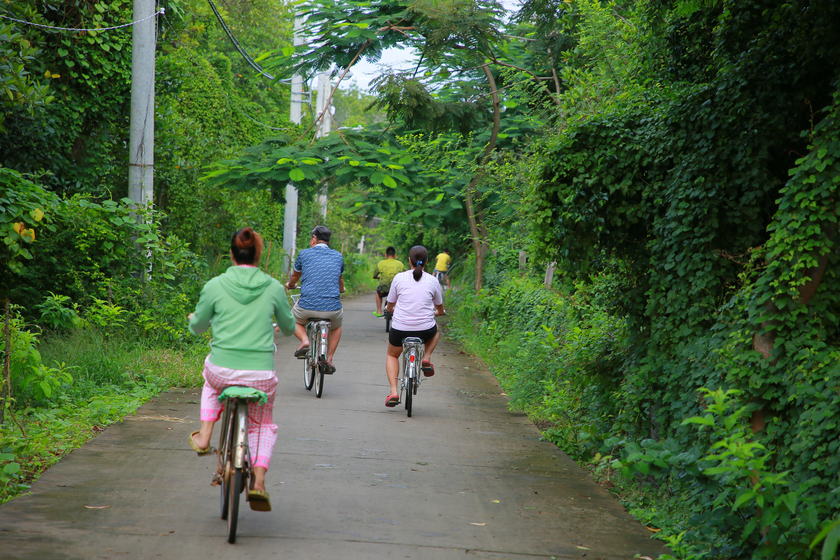
Because the area is not too large, visitors can cycle around the island to see the scenery and daily life of the people.
According to Mr. Thanh Tuan, the highlight of Thieng Lieng is the vast salt fields, surrounded by mangrove forests and cool green coconut groves. Because the area is not too large, visitors can cycle around the island to see the scenery and the daily life of the people.
There are currently about 220 households in Thieng Lieng, 70% of whom make a living from salt production. Therefore, admiring the vast white salt fields and learning about the beauty of the craft village is an experience not to be missed when coming here. However, the salt production period only lasts during the sunny months, so visitors need to choose the right time to go so they can freely take photos and check-in with this "specialty". It can be said that Thieng Lieng island (Can Gio) is one of the rare areas that still preserves the traditional salt production profession in Saigon.
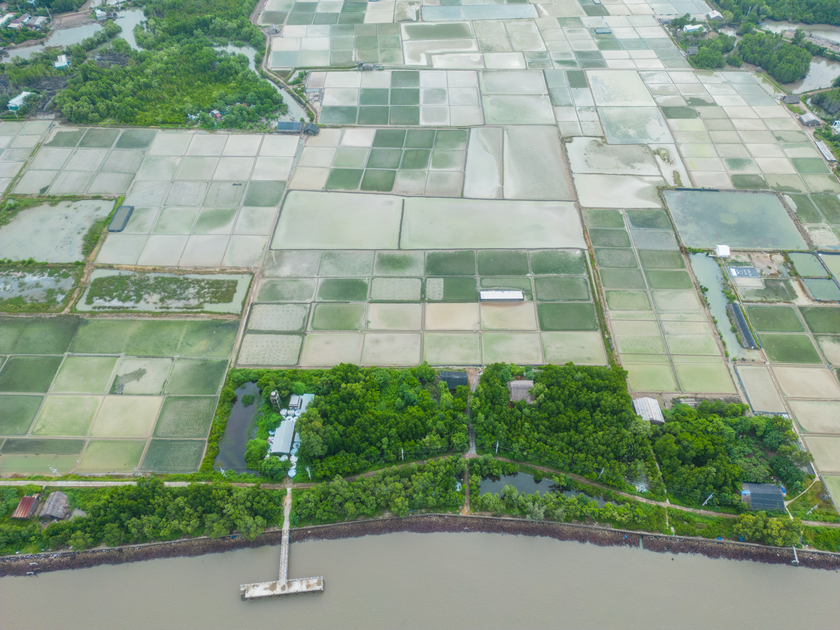
The highlight of Thieng Lieng is the vast salt fields, surrounded by mangrove forests and cool green coconut palm groves.
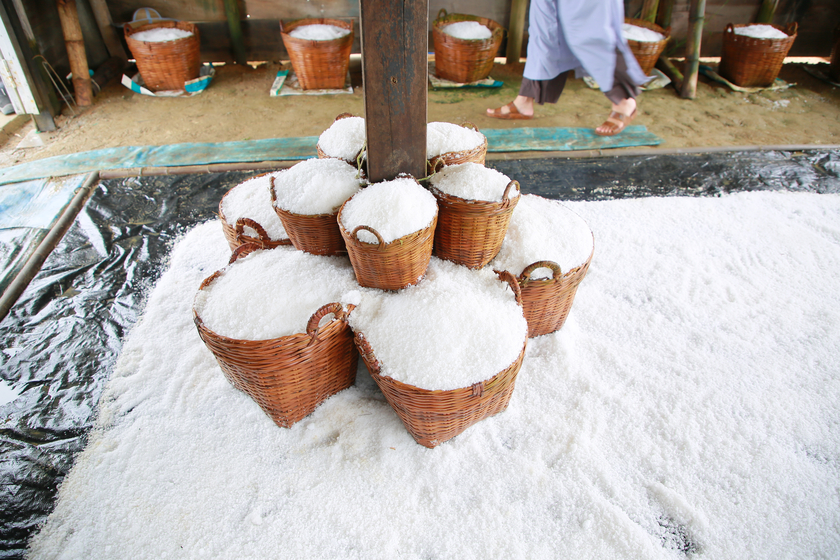
In Thieng Lieng there are currently about 220 households and 70% of them live by making salt.
Tourists can also combine a visit to Giong Chua Mountain, a high rocky ridge located in the middle of the mangrove forest. Giong Chua or Chua Mountain, is considered the only and highest mountain in Ho Chi Minh City. Legend has it that on the mountain there is a deep indentation caused by the "footprints" of a king who once passed by here. Therefore, the name "Chua Mountain" may be a phonetic variation of "Chua Mountain".
Besides, Thieng Lieng also has many unique and interesting experiences. Visitors can try SUP rowing to watch the sunset and sunrise on Long Tau River. For those who love camping and fishing, Thieng Lieng is an ideal place because of its rich and wild nature.

For those who love camping and fishing, Thieng Lieng is an ideal place because of its rich and wild nature.
Some notes when traveling to Thieng Lieng Island
Move
Mr. Thanh Tuan shared that currently there is no public boat to Thieng Lieng, only to Thanh An. Therefore, most tourists who want to go to the island will have to rent a boat or canoe. Tourists go to Tac Xuat ferry terminal, Can Thanh town, Can Gio district, then take a public boat to Thanh An island.
There are 5 departures and returns every day at: 6:30, 9:30, 12:00, 14:00 and 17:00. From Thanh An Island, visitors can rent a canoe to Thieng Lieng, each trip can carry 5 to 6 people, the price is about 400,000 - 600,000 VND/trip. If you are traveling in a large group and do not want to travel in many batches, you can rent a boat directly from Tac Xuat to Thieng Lieng but the price will be higher.
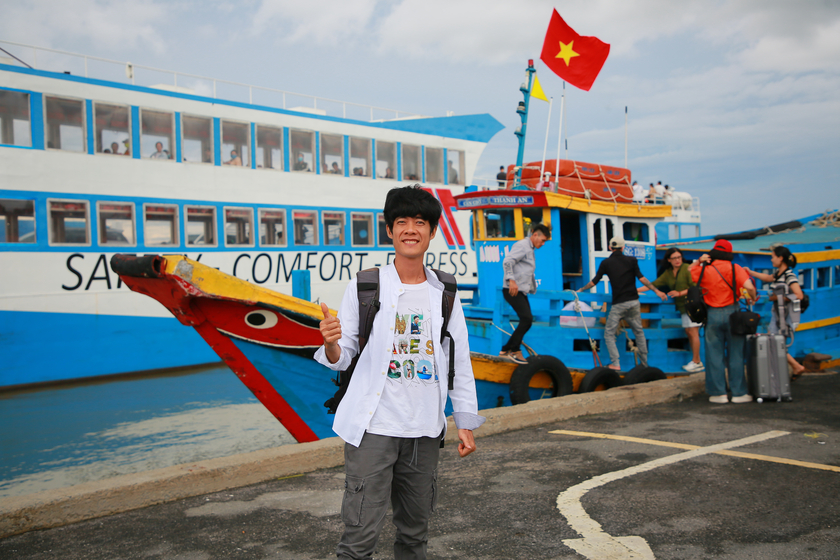
Currently there is no public train to Thieng Lieng, only train to Thanh An.
Cuisine
Being a mangrove island at the mouth of a river, the local people are mostly from the West, so the cuisine has its own unique characteristics. Dishes are made from available ingredients such as dried fish, oysters, mantis shrimp... or fruits on the island such as water coconut, syrup tree, sesban flower... On the island, there are almost no shops and no market, so tourists have to order meals from local people's houses or homestay owners.

The islanders are hospitable, enthusiastic and honest.
Weather
Although it is a place very close to the city center, you can come to it at any time of the year, but because of traveling by train, tourists need to check the weather in advance. Mr. Thanh Tuan especially emphasized that the salt fields are only harvested from October to April of the lunar calendar, during the rainy season this place is abandoned, moss grows green, so you need to choose the right time to be able to enjoy all the beauty of Thieng Lieng island.
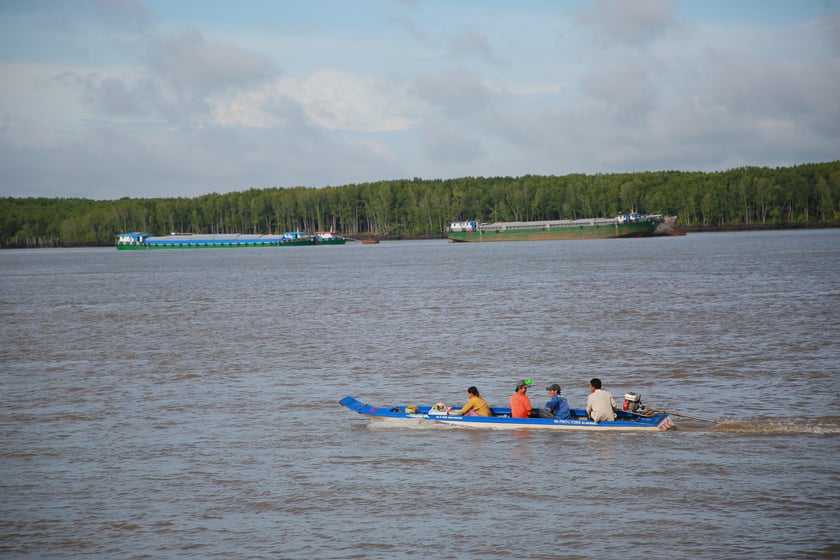
Although it is a place very close to the city center, it can be visited at any time of the year, but because of traveling by train, tourists need to check the weather in advance.
Thieng Lieng is a poor hamlet, people only have a small income from salt production. Thanks to tourism development, people have the opportunity to earn more income. In addition, tourism here also aims at protecting the environment, preserving mangrove forests, suitable for tourists who are passionate about experiences and love nature.
“Meeting and chatting with the hospitable and honest islanders, enjoying rustic dishes and learning more about the traditional salt-making profession made me especially impressed with this trip,” Thanh Tuan confided.
